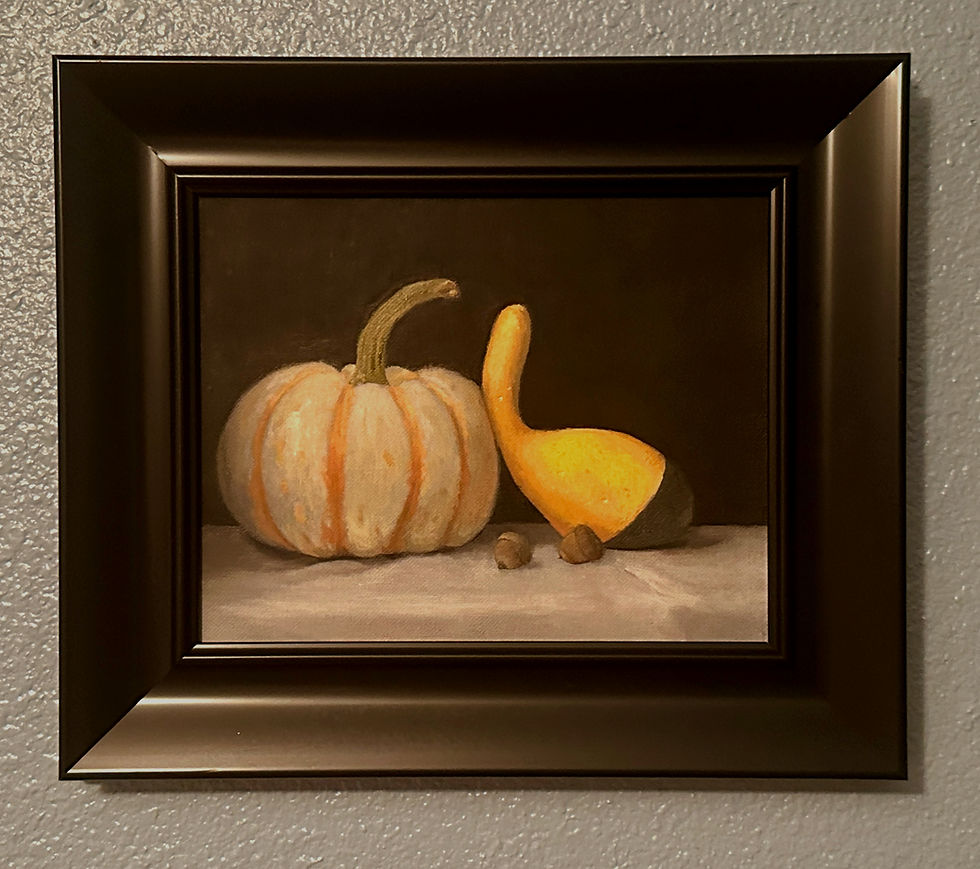The Beauty of Soft Edges in Painting: Creating Depth, Emotion, and Realism
- Durhl Davis

- Aug 27
- 2 min read
When you look at a painting that feels alive, chances are the artist has mastered one of the most subtle yet powerful techniques—soft edges. While hard edges define sharp boundaries and attract the eye, soft edges bring atmosphere, movement, and a sense of depth. They allow the viewer’s gaze to wander naturally, blending shapes and forms in a way that mimics the world around us.
As an artist, understanding when and how to use soft edges can transform your work from flat and rigid to full of life and dimension. Let’s explore why this technique matters and how it enhances your painting.
What Are Soft Edges in Painting?
A “soft edge” is where two shapes, colors, or values meet without a sharp, defined line. Instead, the transition feels blurred, subtle, or atmospheric. Think of a shadow fading into light, or the way clouds merge with the sky—those are soft edges in nature.
By contrast, a hard edge occurs when one shape ends abruptly against another, like the outline of a windowpane or the rim of a glass.
Both types of edges are important in art—but it’s the balance between them that creates realism and visual harmony.

Why Soft Edges Matter in Fine Art
1. Depth & Perspective – Soft edges make objects recede into the background, creating a sense of distance.
2. Realism – In real life, not everything has sharp outlines. Soft edges mimic how the human eye perceives the world.
3. Atmosphere – A painting with controlled soft edges feels more natural and inviting.
4. Focus Control – Hard edges draw attention, while soft edges allow the viewer’s eye to rest and move naturally.
5. Emotional Impact – Soft edges often evoke a sense of calm, mystery, or dreaminess.
Techniques to Create Soft Edges
· Blending with a Dry Brush – Feather the paint gently to blur transitions.
· Wet-on-Wet Technique – Apply paint while the surface is still wet, allowing colors to merge softly.
· Glazing Layers – Use thin, transparent paint layers to gradually soften an area.
· Lost-and-Found Edges – Allow parts of a subject to dissolve into the background, keeping focus only where needed.
Using Soft Edges in Portraits, Landscapes, and Still Life
· Portraits – Soft edges around cheeks, hair, and shadows create lifelike skin tones and natural expressions.
· Landscapes – Distant trees, skies, and misty backgrounds are best painted with soft transitions.
· Still Life – Fruits, flowers, and glass objects gain realism when sharp highlights contrast with soft edges in shadowed areas.
Final Thoughts
Mastering soft edges in painting is about knowing when to guide the eye with hard edges and when to let forms melt into one another. This delicate balance is what separates a good painting from a truly compelling one.
The next time you’re at the easel, ask yourself: Where should the viewer look first? The answer will help you decide where to sharpen—and where to soften.




Comments